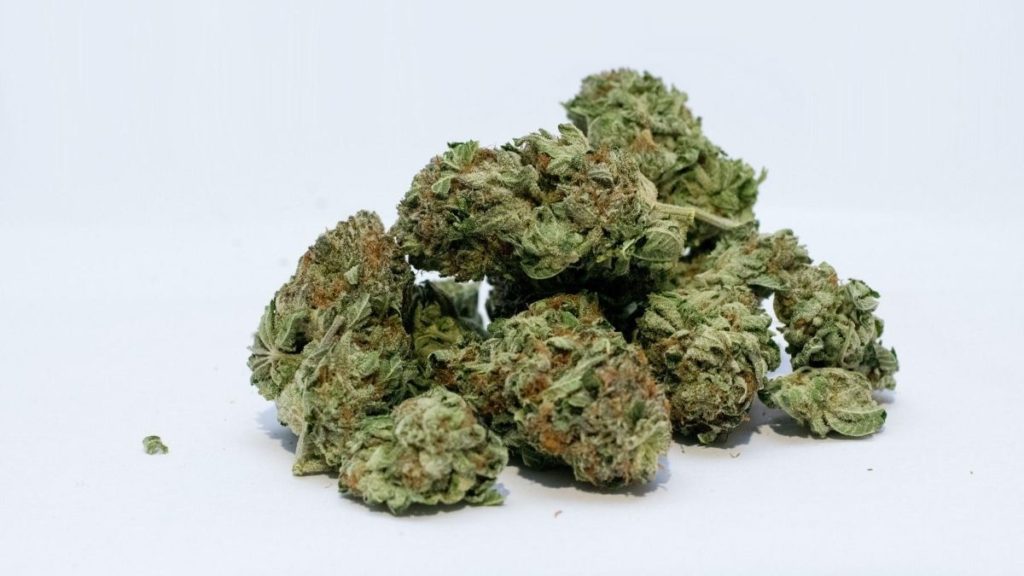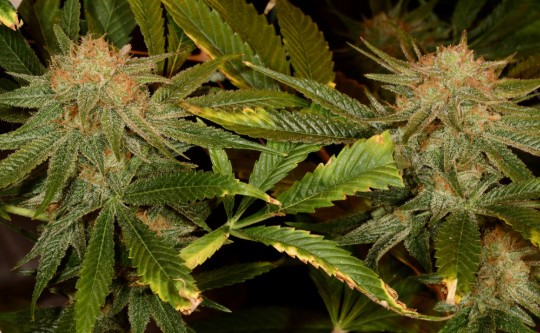Depending on the user, the product and the circumstances, marijuana can induce introversion or vivacity, wit or paranoia, comfort or unease. The problem is there’s no real way to know what sensation a given product will induce.
Many US companies label their products with terms like “buzz” and “chill”, but none I’m aware of has produced data showing these products work as promised. The abundance of brands, however, encourages users to think of different marijuana products as appropriate for different moods, times of day or desired medical benefits.
The basic marijuana product, the dried and cured buds of the cannabis plant, is now called flower. Dispensaries often display it in glass jars for customers to stick their noses in.
Flower comes in three main categories. Indica, sativa and hybrid. According to stoner tradition, indicas induce a nighttime sedentary effect, while sativas offer a peppier daytime buzz.
There is no credible science to back any of this up. It is a pseudoscience like astrology, valuable to those who choose to place stock in it.
While virtually everything available in dispensaries today is a hybrid of some kind, indica became associated with certain observable characteristics like broader leaves, and most importantly, its earthy smell. Sativas, meanwhile, are generally associated with bright smells like citrus and pine.
Each of the three main categories are divided into thousands of “strains” just as there are many varietals of grape. The difference is there is a formal recognized difference between, say, malbec and merlot grapes. But even with the best known marijuana strains – such as sour diesel, OG kush or durban poison – it is largely up to the beholder to determine what a plant is.
Savvy buyers understand that what one shop calls sour diesel, won’t necessarily resemble what another shop calls sour diesel. The defining trait of a sour diesel – a diesel-y smell – is up to the beholder to look for or not, as she wishes. Similarly if the sour diesel isn’t selling, there is nothing to stop a dispensary from renaming it something that will sell better.
The French naturalist Jean-Baptiste Lamarck first distinguished between the tall, gangly cannabis sativa plants found in Europe and the shorter, squatter cannabis indica plants native to Asia in 1783. I haven’t found any evidence that Lamarck distinguished between indica and sativa highs. As best I can determine, the current indica/sativa distinction began to come into use after California became the first state to legalize medical use in 1996.
Labels are not especially helpful, but that doesn’t mean customers can’t tell the difference between good pot and bad pot. Or, given the abundance of product available in legal places, good pot and even better pot.
Wendy Kornberg, the CEO of Cannabis and a cannabis farmer in northern California’s Humboldt county, the heart of the famous Emerald Triangle growing region, said much of what she looks for is in the smell.
Marijuana and many other plants get their smell from chemicals called terpenes. And many connoisseurs look for rich terpene bouquets. Other aromas, Kornberg said, can clue buyers into lower-quality product. The smell of hay can indicate the plant was improperly cured or dried, she said, and is “kind of the worst”.
Other ways to assess product owe to the localism movement. “I’m a bit of a purist,” Kornberg said. “I look for outdoor [grown], I look for small farms.”
Christina Hadar, the co-founder of Oregrown in the state of Oregon, said Hadar recommends cannabis from farms which are “as organic as possible”. She’s an advocate of “craft” cannabis which she defines largely by growing practices. “If they take the time and the care to put out the best possible product I consider that craft.”
In the dispensary, “you really want to look for something that’s green and vibrant,” Hadar said, as opposed to “yellow, stemmy and dry”. She added that good weed burns with a white ash. Black ash can indicate pesticide use.
Sativa, indica and various other variations provides a useful vocabulary for discussing the plant, even if it lacks the precision which can be applied to fully legal products. And if they’re wrong, well, the stakes are low.
But enjoying cannabis doesn’t require obsessive connoisseurship. Asked whether he prefers indica or sativa, the musician Willie Nelson, who’s known for his prodigious cannabis consumption, said: “I haven’t become all that expert on that.
“The way I look at it is: I’m either high or I’m not.”
- High time is the Guardian’s column about how cannabis legalization is changing modern life. Alex Halperin welcomes your thoughts, questions and concerns and will protect your anonymity. Get in touch:high.time@theguardian.com
Since you’re here…
… we have a small favour to ask. More people are reading the Guardian than ever but advertising revenues across the media are falling fast. And unlike many news organisations, we haven’t put up a paywall – we want to keep our journalism as open as we can. So you can see why we need to ask for your help.
The Guardian’s independent, investigative journalism takes a lot of time, money and hard work to produce. With investigative reporting, we often don’t know at the beginning how a story will unfold and how long it might take to uncover. This can mean it is costly – particularly as we often face legal threats that attempt to stop our reporting. But we remain committed to raising important questions and exposing wrongdoing. And we do it because we believe our perspective matters – because it might well be your perspective, too.
I appreciate there not being a paywall: it is more democratic for the media to be available for all and not a commodity to be purchased by a few. I’m happy to make a contribution so others with less means still have access to information.Thomasine, Sweden
Credit: www.theguardian.com













